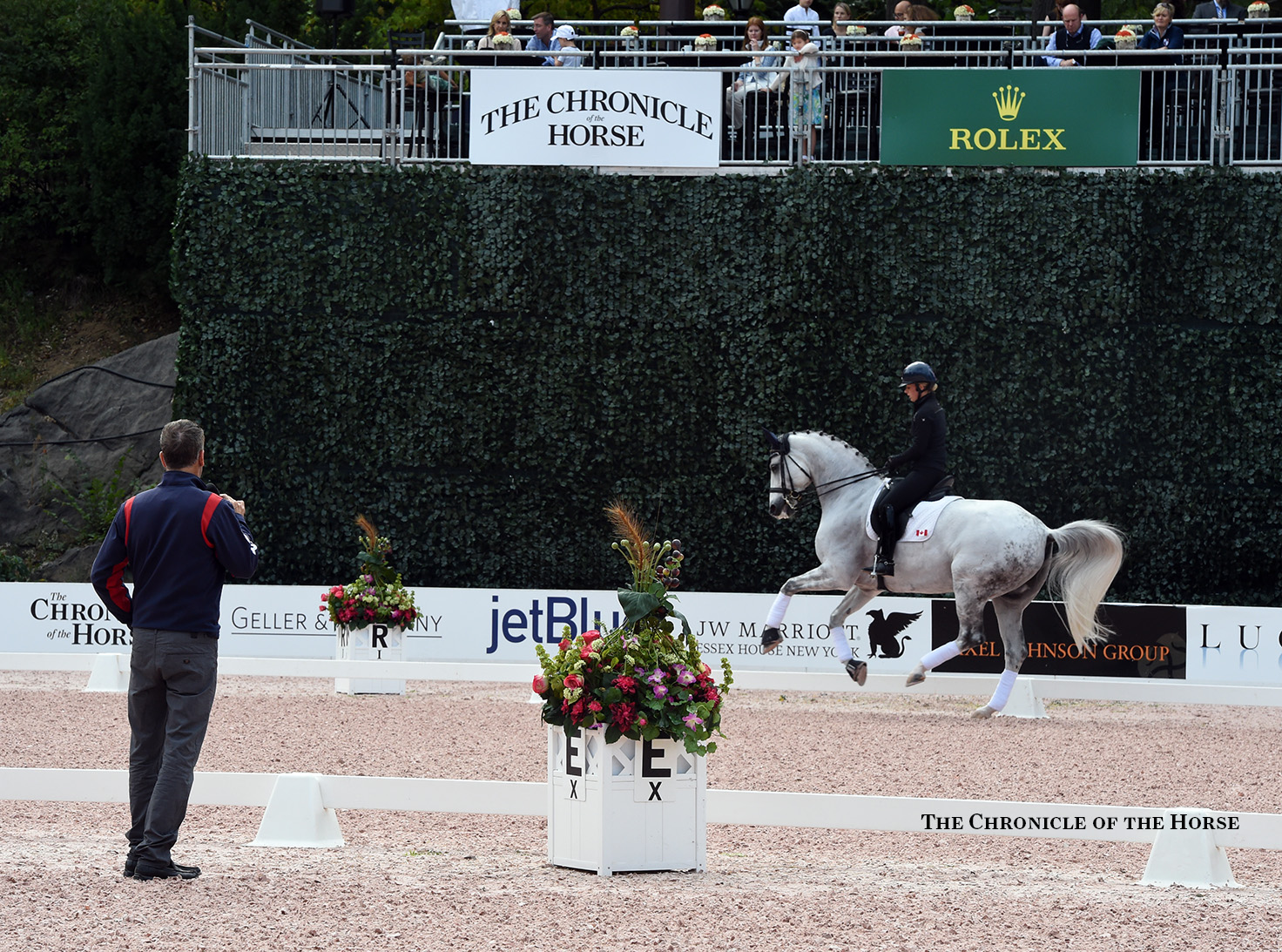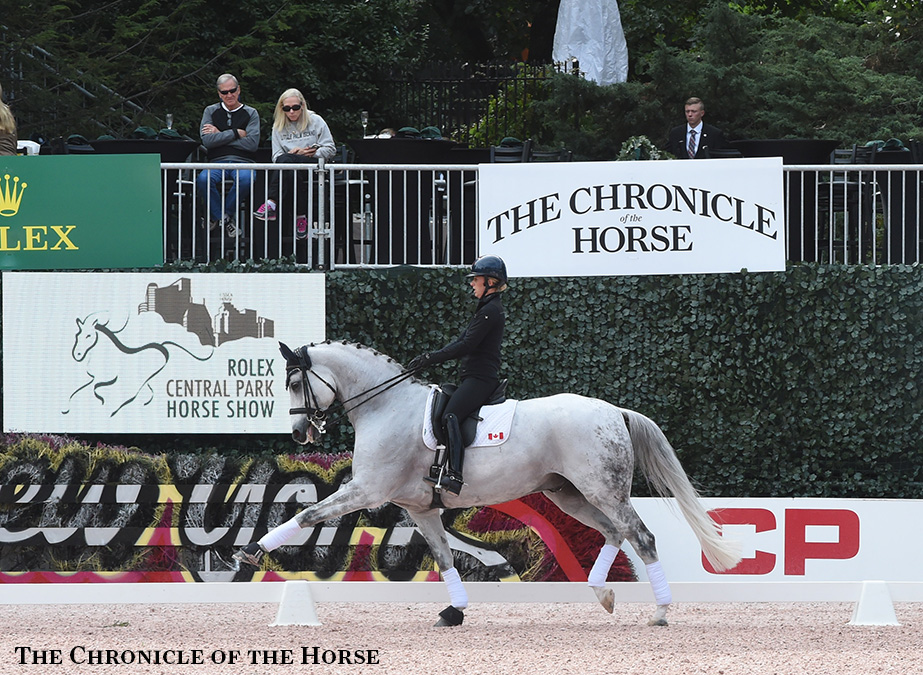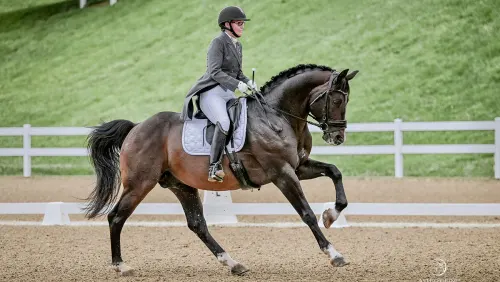Charlotte Dujardin’s won Olympic gold, FEI World Equestrian Games gold and European Championships gold, but lucky spectators at the Rolex Central Park Horse Show got to see her tackle a new challenge last night—completing a Grand Prix freestyle demonstration on a horse she’d only ridden once before.
Today Dujardin tacked up that same horse, Evi Strasser’s 12-year-old Renaissance Tyme, for a master’s class in the Wollman Rink in New York City’s Central Park. During the hour-long session, she demonstrated all the Grand Prix movements, giving the viewers some lessons they could take home for their own mounts with the assistance of U.S. Dressage Chef d’Equipe Robert Dover.
Here is some of Dujardin’s wisdom from the session:
ADVERTISEMENT
- “I start by stretching the horse and trying to make him relaxed and supple,” she said. “It’s a bit like gymnastic with a horse, dressage is. You wouldn’t expect a gymnastics person to just go and start their workout; they do a nice stretch in the warm-up first.”
- “We get the horses as loose as possible before we ask them to do more work in their bodies. if they’re not loose in the beginning, they’re not going to be loose and supple in their proper work.”
- “You think it’s quite boring, but this is the foundation. It’s like building a house. If you have a bad foundation, you’re going to have a bad house.”
- “Dressage is about repetition and correction and being strong with yourself to not let bad habits happen. It’s being on top of every little thing. If you make bad transitions at home because you’re lazy or not really thinking of it, you’re going to make bad transitions in the arena. Then you go, ‘oh, he did that,’ but that’s because you allowed him to make all those mistakes in the first place.”
- “If I ride a bad corner, I’m going to ride a bad movement. The short sides and corners are what set you up for every movement.”
- “As a rider you always want to go on the good side. But you have to do a bit more on the bad side to make it as good as the good side. How many riders want to work the bad side? When I’m teaching, I see everyone wants to go on the easy side. But you don’t want to do so much on the bad side that you then upset your horse.”
- “The changes are one of the most personal things in your training. Everybody has a different aid for the flying change.”

- “At home I never train the changes on the diagonal. I stick to the wall. He has changes that swing from side to side. Rather than pushing forward, he pushes to the side. By using the wall, the wall does the work for me.”
- “I love hot horses. I hate kicking. I’m a lazy rider. I love to just sit and steer.”
- “The much more important things to me are the walk and the canter. They’re the two things you can’t change. With the trot, by teaching the horse to have more suspension, you can change the trot. I never worry about how bad the horse trots. I know with my training, I can make it look spectacular. Even a really ugly horse, you can make it look really special. Don’t worry if you have an ugly horse.”
- “I can’t tell him off for wanting to try too much. He has to be rewarded because all he’s trying to do is try a bit harder.”
- “It’s really important with the piaffe that I can make it easier for the horse by allowing him to travel forward. If I was to keep him on the spot all the time, it’s a tremendous amount of strain. If I did that every day, the horse would never last.”
- “He’s a little tense and tired, so it’s important to stop and listen to him and not keep pushing so I make him a sour horse.”

- “It’s so important that these horses enjoy every day of their work. Our routine is that we train in the school four days a week. On Monday and Tuesday they work, and then on Wednesday they go hacking on the road, and that means every horse—every horse in the yard hacks. Then Thursday and Friday they do schooling sessions, probably not longer than 45 minutes. Saturday they hack again, and Sunday is a complete day off. They all go in the field, even Valegro. They all have a normal life; we don’t wrap them up in cotton wool.”















